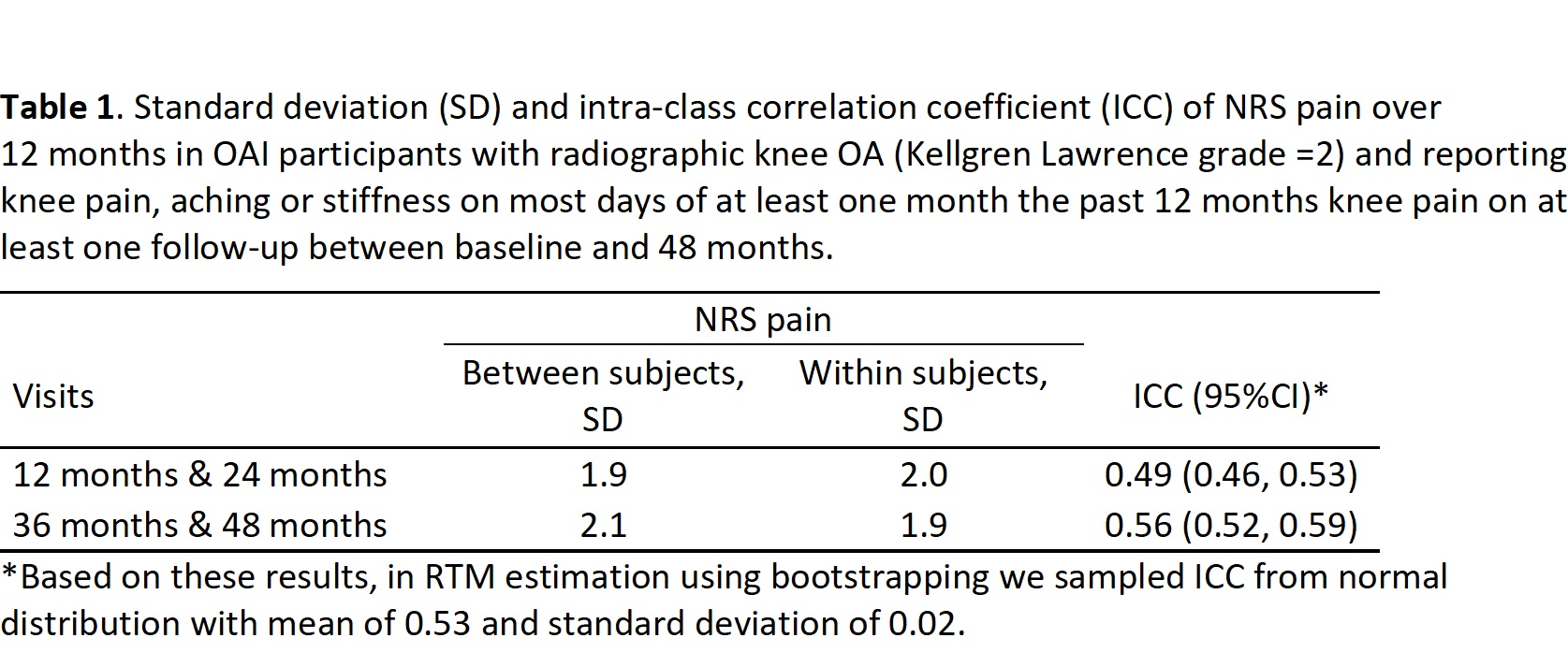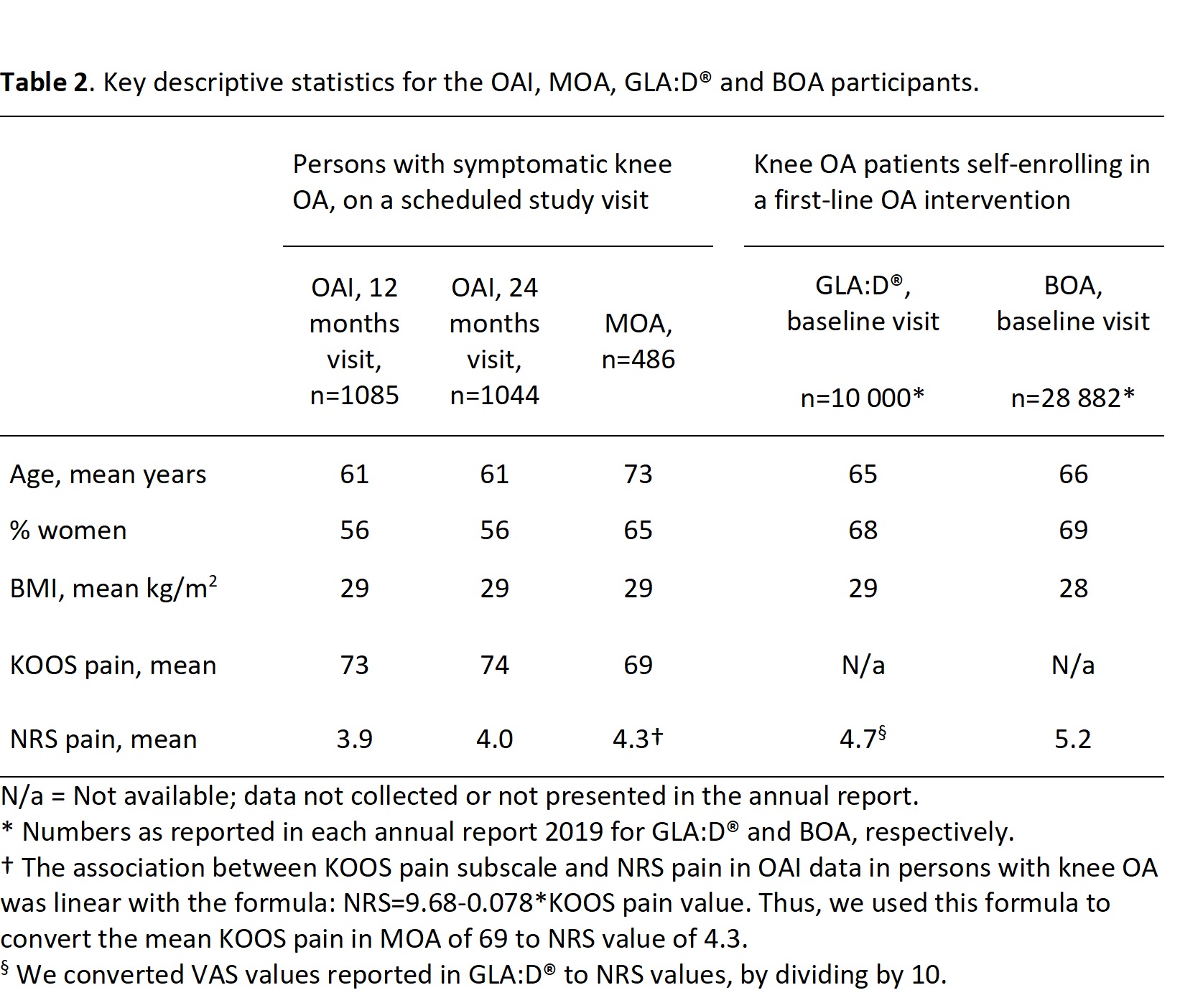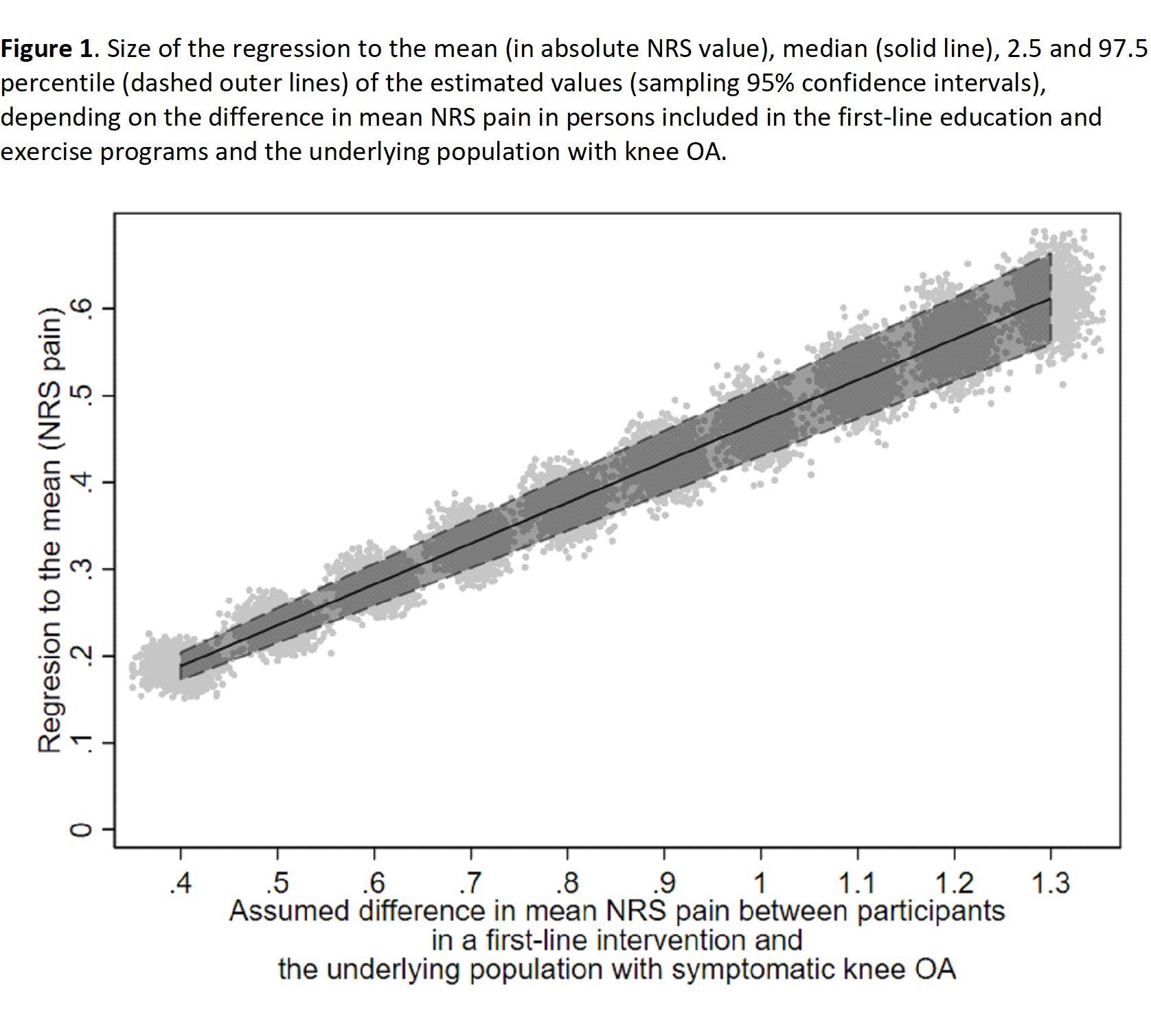Session Information
Session Type: Poster Session B
Session Time: 8:30AM-10:30AM
Background/Purpose: Persons who seek treatment for osteoarthritis (OA) are likely doing so when experiencing a flare-up in pain. Due to natural fluctuation of pain, this will lead to regression to the mean (RTM), i.e. on average less pain at follow-up. In contrast to placebo response, RTM is deceiving as it constitutes no treatment response. Using reported results from two nation-wide exercise and education interventions, we estimated the size of the reported average improvement that could be attributable to RTM.
Methods: From the annual reports 2019, we retrieved average pain levels and reported improvement for knee OA patients enrolled in the Good Life with osteoArthritis in Denmark (GLA:D®) and Better Care for OA (BOA), Sweden. Both programs are similar first-line exercise and education programs for patients with OA.
To estimate mean levels of pain in subjects with symptomatic knee OA, i.e. the underlying population of GLA:D® and BOA, we used cohort data from the Osteoarthritis Initiative (OAI), USA, and the Malmoe OA study (MOA), Sweden. From OAI we included subjects with radiographic knee OA at baseline, 12 or 24 months, who reported knee pain, aching or stiffness on most days of at least one month the past 12 months at the baseline visit. MOA consisted of two parts: First, subjects responded to a postal questionnaire. Later, they had a clinic visit when knee X-rays were obtained. We included subjects who had signs of OA on X-rays and reported knee pain in the postal questionnaire. For OAI, we report pain values at both 12 and 24 months, and for MOA we report pain assessed at the clinic visit.
We used OAI data to estimate variability in pain over time, i.e. we determined the intra-class correlation coefficient (ICC) of two measurements (Table 1). To estimate the size of RTM expected in GLA:D®/BOA, we used a known formula: (1 ‑ ICC)*(meanPop – meanInt), where meanPop is mean pain in the underlying population and meanInt is mean pain in the intervention cohort at baseline. We assumed the difference in NRS pain between the underlying population and GLA:D®/BOA participants at baseline to vary from 0.4 to 1.3 (Table 2). To also address the uncertainty around the value of ICC we used bootstrapping. As a sensitivity analysis we evaluated the change in pain from baseline to 12 months in OAI.
Results: The mean NRS pain levels at baseline in GLA:D® and BOA participants were worse than in persons with symptomatic knee OA from both the OAI and MOA (Table 2). An average ICC for NRS was ~0.53 (Table 2). We estimated the absolute improvement attributable to RTM in GLA:D®/BOA to range from 0.2 to 0.6 NRS points, depending on the assumptions (Figure 1) in line with the 0.5 NRS point improvement observed in OAI. The reported improvement in NRS from baseline to 12 months in GLA:D® was 1.3 and in BOA 1.0. Thus, in relative terms RTM ranges from 15% to 60% of the reported improvement in NRS pain.
Conclusion: RTM in knee OA patients enrolled in a first-line intervention likely explains between 15% to 60% of the reported average improvement at 12 months. Results from OA interventions without control group(s) should not be inferred to as treatment effectiveness in reporting or marketing because the improvement is inflated by RTM which is neither an effect of the intervention, nor part of placebo response.
To cite this abstract in AMA style:
Englund M, Turkiewicz A. Size of Regression to the Mean in First-Line Interventions for Osteoarthritis: An Illusion of Effectiveness [abstract]. Arthritis Rheumatol. 2021; 73 (suppl 9). https://acrabstracts.org/abstract/size-of-regression-to-the-mean-in-first-line-interventions-for-osteoarthritis-an-illusion-of-effectiveness/. Accessed .« Back to ACR Convergence 2021
ACR Meeting Abstracts - https://acrabstracts.org/abstract/size-of-regression-to-the-mean-in-first-line-interventions-for-osteoarthritis-an-illusion-of-effectiveness/



